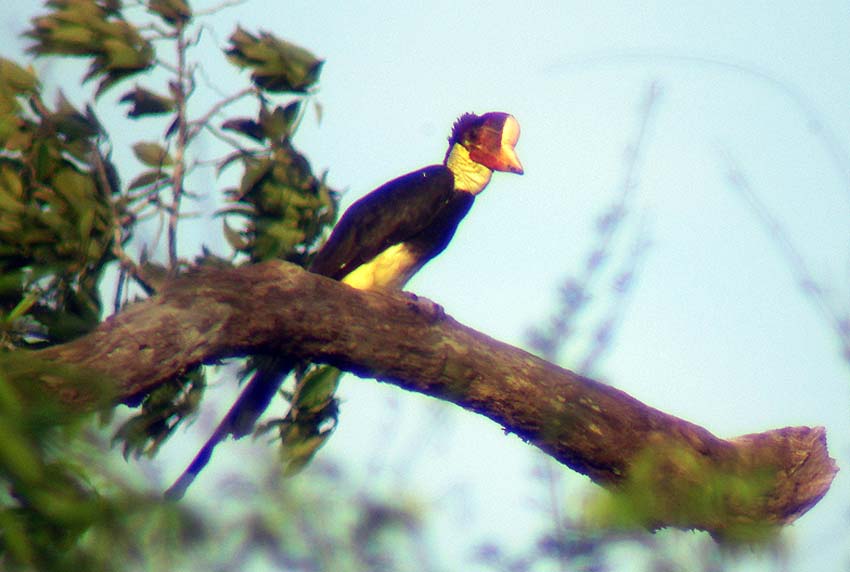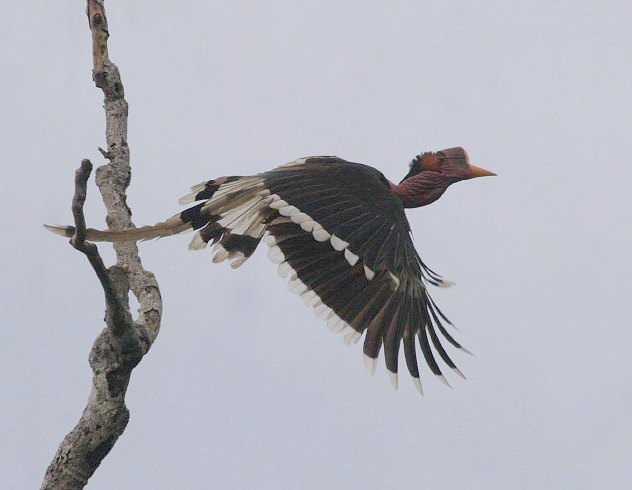
Rhinoplax vigil
SUBFAMILY
Bucerotinae
TAXONOMY
Rhinoplax vigil Forster, 1781, Sumatra. Monotypic.
OTHER COMMON NAMES
English: Great-helmeted hornbill, solid-billed hornbill; French:
Calao а casque rond; German: Schildschnabel; Spanish: Cбlao
de Yelmo.
PHYSICAL CHARACTERISTICS
43.3–47.3 in (110–120 cm); female 5.742–6.25 lb (2.61–2.84
kg), male 6.73 lb (3.06 kg). Very large, dark brown and white
with short red bill colored with preen oil; high casque and
long, white tail feathers.
DISTRIBUTION
South Myanmar and south Thailand, Malaysia, Sumatra, and
Borneo.
HABITAT
Rainforest bird preferring primary habitat below altitude of
4,900 ft (1,500 m) but capable of using selectively logged
forest.
BEHAVIOR
Believed to be territorial. Distinctive loud call has a series of
orientation “Tok” followed by a cascading laughter. Individuals
of either sex occasionally engage in strange, aerial head-butting
BEHAVIOR
s, especially near fruiting figs.
FEEDING ECOLOGY AND DIET
Appears to be a fig specialist. Studies in Malaysia, Borneo, and
Sumatra confirm the diet to be 98–100% figs with up to 12
species of figs eaten regularly.
REPRODUCTIVE BIOLOGY
Little known. Reported to lay aseasonally but in southern
Sumatra tends to fledge young in May/June.
CONSERVATION STATUS
Considered Near Threatened and listed on Appendix I of
CITES. Locally common where habitat is intact but probably
declining through most of its range due to hunting and forest
destruction. Extinct in Singapore in 1950.
SIGNIFICANCE TO HUMANS
One of the most significant species in traditional Southeast
Asian cultures; strongly associated with head-hunting. Feathers
and “ivory” are highly coveted for traditional dances and ceremonial
decorations and although illegal, carved casques are still
traded internationally.
Photo Gallery of - Helmeted hornbill




 Animalia Life
Animalia Life